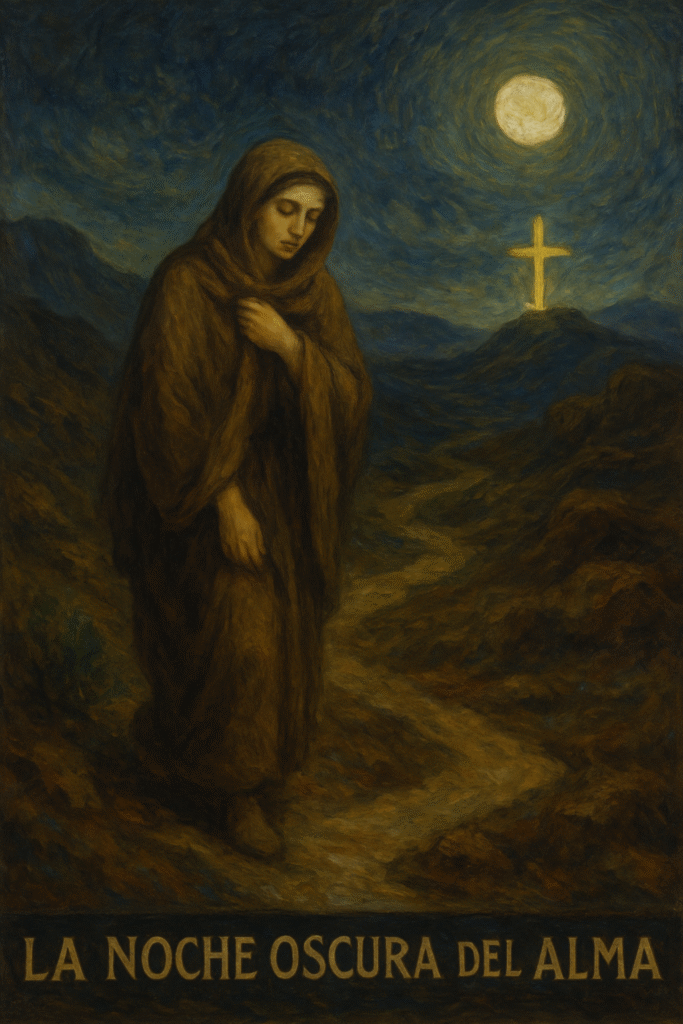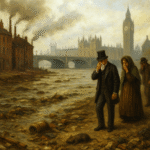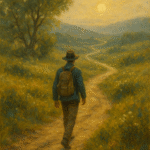La Noche Oscura del Alma, or ‘The Dark Night of the Soul,’ is not only a phrase but a profound concept that encapsulates the journey through despair towards spiritual enlightenment. This term, often associated with the mystic poet and priest St. John of the Cross, delves into the painful process of transformation that individuals often undergo in search of a deeper connection with the divine. The relevance of La Noche Oscura del Alma lies in its portrayal of suffering as a necessary precursor to awakening and union with a higher spiritual reality.
Historically, the phrase has transcended its original religious connotation, evolving into a broader metaphor that embodies life’s struggles, existential crises, and the often messy journey toward self-discovery and enlightenment. Many poets have employed this powerful imagery within their works, creating a rich tapestry of experiences that resonates with those who seek meaning in their pain. These poetic expressions provide insights into personal suffering, transformation, and ultimately the realization of divine unity.
The Role of Suffering in Personal Transformation
Suffering often acts as a catalyst for personal growth and transformation. As uncomfortable as it might be, it pushes individuals beyond their limits, prompting introspection, self-evaluation, and sometimes, a complete reorientation of life priorities. In La Noche Oscura del Alma, suffering is necessary; it purifies the soul, stripping away the ego and bringing forward the authentic self that seeks a higher connection.
To illustrate, consider how poets like John Keats and Rainer Maria Rilke reflect this dynamic in their work. They portray suffering not just as an end but as an integral step toward awakening creativity and a deeper understanding of existence. This thematic exploration leads us to consider how poets interpret transformation and transcendence amidst adversity.
In contemporary contexts, psychological research supports this view, suggesting that individuals who experience significant emotional turmoil often develop resilience and a deeper understanding of life and themselves.
Analysis of Notable Poetry Reflecting Suffering and Transformation
Several poets have famously tackled themes of suffering and transformation, weaving their insights into their work. These poems serve as powerful reflections of La Noche Oscura del Alma, echoing the struggles and victories of the human experience. Below, we delve into some notable examples:
1. St. John of the Cross – “La Noche Oscura”
Few works encapsulate the essence of La Noche Oscura del Alma more vividly than St. John of the Cross’s titular poem. The poem describes the soul’s passage through darkness and suffering as it seeks union with God. It emphasizes a journey that often feels lonely and full of despair, highlighting the importance of perseverance. St. John articulates this process through rich metaphors of flames and shadows, suggesting that through intense spiritual challenges come profound revelations. His verses encourage the reader to embrace suffering as part of their spiritual quest.
2. Rainer Maria Rilke – “The Duino Elegies”
In Rilke’s Duino Elegies, the poet explores existential suffering and the longing for divine connection. The painful quest for meaning within the universe’s incongruities invites readers deeply into their own souls. Rilke’s use of lyricism and emotive imagery communicates the transformative potential of suffering, suggesting that through mourning and despair, the soul stretches towards the transcendental.
Rilke reminds us in his famous line, “For there is no place that does not ache,” that suffering is universal. This acknowledgment serves to forge a connection among humanity; our pain leads to a collective understanding, where transformation is potentially birthed from our shared experiences.
3. Sylvia Plath – “Lady Lazarus”
Sylvia Plath’s work, particularly “Lady Lazarus,” offers a contemporary perspective on suffering and resurrection. Plath’s intense imagery reveals the cyclic nature of death and rebirth, paralleling the themes of La Noche Oscura del Alma. The poem reflects a transformation from victimhood to empowerment through the lens of suffering. Plath’s commencement with darkness ultimately leads her readers towards a light emerging from resilience—a testament to the capability of renewal.
4. Maya Angelou – “Still I Rise”
Maya Angelou’s “Still I Rise” channels the spirit of transformation rising above suffering and oppression. The poem’s refrain captures the essence of resilience, exuding an unyielding spirit in the face of adversity. Angelou’s expressions hint at divine support—an implicit unity with something greater that propels her forward. This theme aligns with La Noche Oscura del Alma as she articulates how suffering can lead to significant personal evolution, culminating in divine confidence and strength.
Connecting Themes to Personal Experiences
The beauty of poetry lies in its ability to resonate on a personal level. Readers often find their experiences reflecting in the verses, revealing hidden truths about their existential journeys. Facing pain, whether through physical illness, emotional turmoil, or spiritual crises, can be transformative. La Noche Oscura del Alma symbolizes this, offering hope and understanding amid suffering.
Furthermore, poets have been pivotal in highlighting a collective consciousness surrounding pain. Their work invites dialogue around struggles, enabling individuals to connect through shared experiences. By engaging with the poems mentioned above, individuals can view their suffering not as an isolated event but as part of a larger, relatable narrative of human experience.
Exploring Historical and Cultural Contexts of Suffering in Poetry
The poetic treatment of suffering is immersed in the historical and cultural fabric of different eras. Each period has contextualized suffering through its lens of philosophy, religion, and societal norms, molding how poets express and interpret pain.
1. Medieval Catholicism
During the Medieval period, the notion of suffering was closely entwined with religious beliefs. The Catholic Church emphasized the redemptive quality of suffering, suggesting that enduring hardship could lead to salvation. St. John of the Cross’s writings were influenced by this when he penned La Noche Oscura del Alma. His depiction of suffering involves spiritual purification and a pathway to divine union, mirroring the Church’s teachings on embracing hardship for eternal reward.
2. Romanticism
The Romantic period brought forth a philosophical shift. Poets began to explore suffering in a way that was not strictly aligned with religious dogma. The exploration of nature, individualism, and the subconscious played a significant role. Poets like Byron and Keats portrayed suffering as a vital part of the creative process, driving them toward aesthetic beauty and emotional honesty. Their works emphasized that through suffering, not only personal revelation occurs but also artistic expression blooms.
3. Modern-Day Perspectives
In contemporary literature and poetry, the discourse around suffering has broadened yet remains rich with depth. Modern poets engage with themes of trauma, mental health, and the search for identity, mirroring societal struggles. Groups often marginalized in historical contexts now find their voices through poetry, bringing new understandings of suffering that reflect the nuances of contemporary society.
Conclusion: Reflecting on the Journey from Suffering to Divine Connection
La Noche Oscura del Alma serves as a poetic lens through which readers can understand the complex interplay of suffering and transformation. The journey from despair to enlightenment is embedded deeply within human experience, and poetry acts as a conduit that allows individuals to navigate their personal dark nights.
As we explore the poetry that encompasses these themes, we uncover profound insights into the self—realizations that our suffering can be transformative and, ultimately, a pathway to divine unity. This transformative journey takes courage and introspection, reminding us that amid our darkest moments, the light of awakening and connection lies ahead.
In embracing the poetic narratives of suffering, transformation, and divine union, individuals not only learn about their pain but also find solace in shared experiences. The words of poets bridge the gap between despair and hope, guiding us through life’s cyclical challenges toward the understanding that divine connection is a profound reality waiting to be accessed through our journeys.
FAQ Section
What is La Noche Oscura del Alma?
La Noche Oscura del Alma is a term coined by St. John of the Cross, describing the painful journey of the soul through suffering towards spiritual awakening and union with the divine.
How does suffering lead to personal transformation?
Suffering urges individuals to confront their pain, leading to deeper self-awareness, resilience, and ultimately personal growth. It is through these trials that individuals often find their true purpose and understanding of life.
What are some notable poems about suffering and transformation?
Some noteworthy poems include St. John of the Cross’s “La Noche Oscura,” Rainer Maria Rilke’s “Duino Elegies,” Sylvia Plath’s “Lady Lazarus,” and Maya Angelou’s “Still I Rise,” each reflecting on suffering as a catalyst for change.
How can poetry help with understanding personal pain?
Poetry has the unique ability to articulate feelings and experiences that may be difficult to express. Engaging with poetic texts allows individuals to find solace, connection, and understanding in their pain through shared human experiences.
Are there modern interpretations of La Noche Oscura del Alma?
Yes! Contemporary poets and thinkers explore themes surrounding mental health, trauma, and spiritual seeking. These modern interpretations often reflect the complexities of modern life while encouraging resilience and hope amid suffering.
How do you connect with divine unity through suffering?
To connect with divine unity through suffering often involves embracing the experience, engaging in deep introspection, and allowing oneself to be vulnerable. Many find that through their struggles, they develop a heightened awareness of the preciousness of life and ultimately a connection to something greater than themselves.


